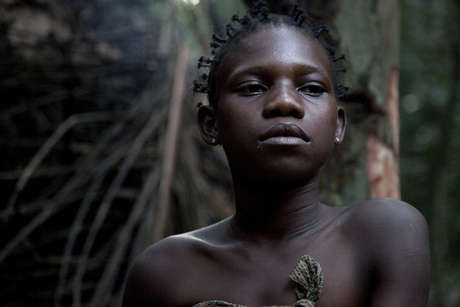Five things the BBC didn’t tell you about Kaziranga
December 5, 2016

This page was created in 2016 and may contain language which is now outdated.
Update: Further BBC reporting on Kaziranga here
The BBC’s “Planet Earth II” recently featured an Indian national park, Kaziranga, known for its one-horned rhinos, tigers, and for hosting Prince William and Princess Kate earlier this year. What the show didn’t tell you about however, were the brutal conservation policies park guards use against local people, many of them tribal.
In the interests of balance, we thought we’d reveal a few additional facts about the national park:
#1: Guards shoot people on sight
Kaziranga park guards are armed and shoot intruders on sight. There are no arrests, no trial, no judge or jury, no opportunities for appeal – an armed guard sees an “intruder” – and kills them. This can have devastating consequences for people who live around the park. Some have been shot for wandering over park boundaries to collect firewood or retrieve cattle. In July this year, a seven-year old boy was shot and subsequently spent several months in hospital. 62 people were killed there in nine years, and another 42 people were killed between 2014 and 2015 alone.
#2: Guards are motivated to kill
Not only are guards permitted to commit summary executions, they are positively encouraged to do so. A 2014 report by the park’s director literally spelled it out – two of the maxims they use in training are “never allow any unauthorized entry – kill the unwanted” and “must obey or get killed.” These are terrible human rights violations, committed in the name of conservation. They’re also against international law.

#3: The guards are getting involved in poaching themselves
All of this brutality is justified on the grounds that it deters poachers. Yet the armed guards who are there to protect the animals are often profiting by killing them themselves. In May this year, four members of the park’s staff were arrested for involvement in poaching, and another senior official is facing charges after a tiger skin and ivory were found in his office. Shoot on sight is a con – and it’s harming conservation.
#4: Tribal peoples are facing evictions from the area
Around India, tribal peoples are being illegally evicted in the name of conservation. The authorities used brutal tactics to evict non-tribal settlers in September, when two people were killed and about twenty wounded, and tribal people are being threatened with the same treatment. A local contact told Survival that “everyone is very frightened” about the prospect of eviction. A 2015 court ruling ordered the evictions, citing the needs of wildlife, stating “there should be no human habitation,” despite the fact that people have coexisted with the animals there for generations.

#5: Tribal peoples are better at looking after their environment than anyone else
Tribal peoples have been dependent on and managed their environments for millennia. Their lands are not wilderness. They are the best conservationists and guardians of the natural world. They should be at the forefront of the environmental movement, yet the Indian authorities prefer to put their faith in corrupt officials and armed guards.
Tribal peoples are being illegally evicted from their ancestral homelands in the name of conservation. The big conservation organizations are guilty of supporting this. They never speak out against evictions. WWF even offers commercial tours of Kaziranga on its website. Tourists are welcome in the reserve – but tribal peoples are not.
In another tiger reserve in southern India, tribal peoples have been allowed to stay, and tiger numbers have increased at above the national average. The policy of threatening tribal peoples with arrest and beatings, torture and even death is inhumane and unnecessary. It’s a shame such a high-profile wildlife documentary decided not to acknowledge this.

